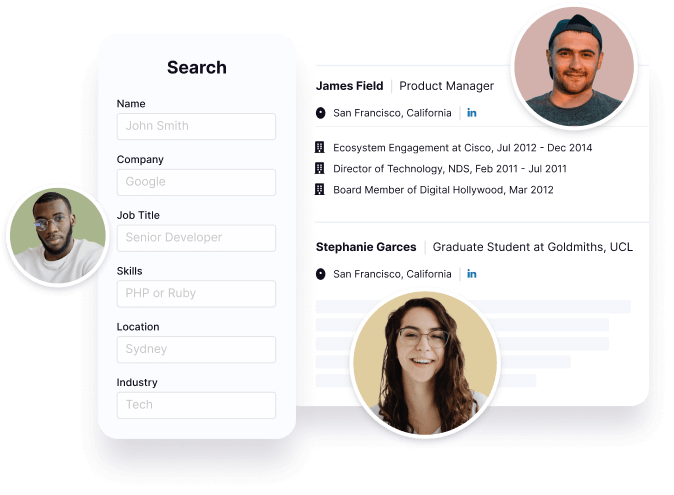Sushant Tripathy's Email & Phone Number
Data Scientist at PayPal
Sushant Tripathy Email Addresses
Sushant Tripathy's Work Experience


PayPal
Data Scientist
October 2016 to December 2018

Stella.ai
Lead Data Scientist and Core Developer
October 2015 to October 2016



Northwestern University, Feinberg School of Medicine
Ph D, Driskill Graduate Life-sciences Program
September 2008 to March 2015



Northwestern University, Feinberg School of Medicine
Research mentor, CURE 2012
June 2012 to August 2012

Northwestern University, Feinberg School of Medicine
Research mentor, REU 2011
June 2011 to August 2011

Northwestern University, Feinberg School of Medicine
Research mentor, RET 2010
June 2010 to August 2010

Northwestern University, Feinberg School of Medicine
Research mentor, CCNE REU 2010
June 2010 to August 2010

Bachelor (with Honors) and Master of Technology
August 2003 to May 2008


Show more
Show less
Sushant Tripathy's Education
Northwestern University - The Feinberg School of Medicine
January 2008 to January 2015
Indian Institute of Technology, Kharagpur
January 2003 to January 2008
Stanford University Graduate School of Business
Show more
Show less
Frequently Asked Questions about Sushant Tripathy
What is Sushant Tripathy email address?
Email Sushant Tripathy at [email protected] and [email protected]. This email is the most updated Sushant Tripathy's email found in 2024.
What is Sushant Tripathy phone number?
Sushant Tripathy phone number is +1.5105855986 and 312-503-6713.
How to contact Sushant Tripathy?
To contact Sushant Tripathy send an email to [email protected] or [email protected]. If you want to call Sushant Tripathy try calling on +1.5105855986 and 312-503-6713.
What company does Sushant Tripathy work for?
Sushant Tripathy works for PayPal
What is Sushant Tripathy's role at PayPal?
Sushant Tripathy is Data Scientist
What industry does Sushant Tripathy work in?
Sushant Tripathy works in the Information Technology & Services industry.
Sushant Tripathy's Professional Skills Radar Chart
Based on our findings, Sushant Tripathy is ...
What's on Sushant Tripathy's mind?
Based on our findings, Sushant Tripathy is ...
Sushant Tripathy's Estimated Salary Range
Sushant Tripathy Email Addresses
Find emails and phone numbers for 300M professionals.
Search by name, job titles, seniority, skills, location, company name, industry, company size, revenue, and other 20+ data points to reach the right people you need. Get triple-verified contact details in one-click.In a nutshell
Sushant Tripathy's Personality Type
Introversion (I), Intuition (N), Thinking (T), Judging (J)
Average Tenure
2 year(s), 0 month(s)
Sushant Tripathy's Willingness to Change Jobs
Unlikely
Likely
Open to opportunity?
There's 94% chance that Sushant Tripathy is seeking for new opportunities











Sushant Tripathy's Social Media Links
/in/sushanttripathy /redir/redirect /company/google /school/northwestern-university-feinberg-school-of-medicine/